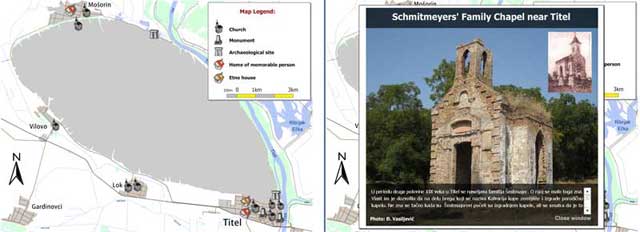LOESSFEST'09 | Aug. 31st – Sept. 3rd, 2009 |Novi Sad-Serbia
Touristic Information System of Titel Loess Plateau
Vasiljević, Dj.A.1, Marković, S. B.1, Hose, T. A.2, Basarin, B.1, Lukić, T.1
1Department of Geography, Tourism and Hotel Managment, Faculty of Sciences, University of Novi Sad, Serbia
2Department of Tourism, School of Sport, Leisure and Travel, Buckinghamshire New University, Queen Alexandra Road, High Wycombe, Buckinghamshire, HP11 2JZ, United Kingdom
In the last two decades, the concept of geoheritage has gained an increasingly important role in the field of fundamental researches, nature conservation, and also tourism. New trends in tourism have seen the evolution from mass tourism to sustainable tourism and the recognition of its associated activities, such as geotourism. The perfect example of this statement is a Geopark, the area with the highest level of geo-heritage conservation, especially unique geologic characteristic of its area. Geopark is a territory encompassing one or more sites of scientific importance, not only for geological reasons but also by virtue of its archaeological, ecological or cultural value.
Given the presence of unique and attractive geological regions in Serbia, there are some intentions by certain organisations (National Board for Geoheritage, Nature Protection Institute and Chair of Physical Geography of Department for Geography, Tourism and Hotel Management from Novi Sad) to develop and promote several geotourism destinations in this country.

Nowadays, the most common medium used to promote tourist destinations is the internet. Amongst the great advantages of the internet in the tourism business is that it enables the customer to have much easier and direct access to a very large amount of up-to-date information and visual description of desirable location than traditional printed media. The purpose of this paper is to present a case study of how tourism destinations (in this case a potential geotourism destination) can be marketed effectively on the Internet by employing interactive thematic maps used within this future tourism destination web site and other up-todate media. This study presents several thematic interactive maps of the Titel loess plateau and its surrounding area, based on data obtained by the Nature Protection Organization of Serbia and representative papers from the Department for Geography, Tourism and Hotel Management from Novi Sad.
This paper has shown that it is possible, with small investments and effort while making these maps, to promote certain destination and provide potential visitors with all the necessary information – a truly cost-effective improvement in communicating with potential income-generating tourists. Geotourism, as a new and still purely developed trend in Serbian tourism needs to use modern technologies to make such destinations not only attractive to scientists and nature-lovers but to all people willing to learn about the world around us.



